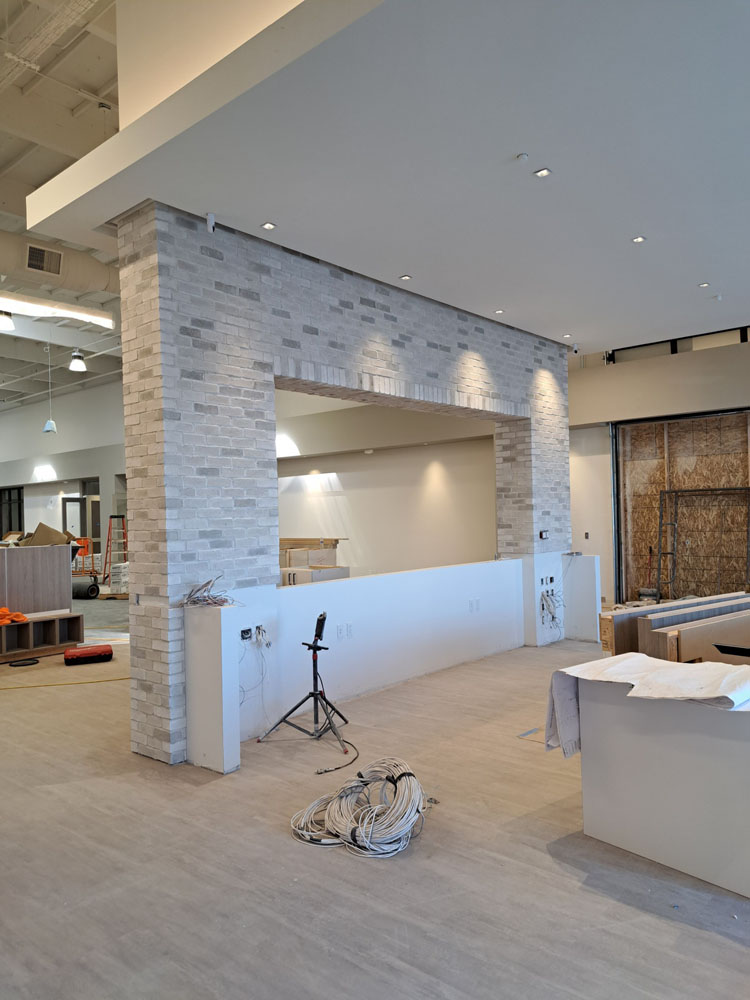Introduction
Are you tired of the outdated look of your home's exterior? Do you want to give it a fresh, new appearance that will make your neighbors jealous? Look no further than faux stone siding. This innovative and versatile material can completely transform the look of your home, giving it a stylish and durable exterior that will last for years to come. In this article, we will explore the benefits of faux stone siding and how it can enhance the beauty and value of your Oregon home.
Faux Stone Siding: An Overview
Faux stone siding is a synthetic alternative to traditional masonry materials such as natural stone or brick. It is made from a mixture of cement, aggregates, and pigments that are molded and colored to resemble real stone. The result is a lightweight yet durable material that can be easily installed on any type of exterior surface.
Why Choose Faux Stone Siding?
There are several reasons why homeowners in Oregon are opting for faux stone siding over traditional masonry materials:

Style: Faux stone siding comes in a wide variety of styles, textures, and colors, allowing you to create a custom look for your home. Whether you prefer the rustic charm of stacked stone or the sleek elegance of smooth panels, faux stone siding offers endless design possibilities.
Durability: Unlike natural stone or brick, faux stone siding is resistant to cracking, chipping, and fading. It can withstand extreme weather conditions, making it an ideal choice for homes in Oregon where heavy rain and temperature fluctuations are common.
Affordability: Faux stone siding is more affordable than natural stone or brick, making it a cost-effective option for homeowners on a budget. Additionally, its lightweight nature reduces installation costs as it requires less labor and time compared to traditional masonry materials.
Versatility: Faux stone siding can be installed on virtually any type of exterior surface, including wood, concrete, and vinyl. It can also be used to accentuate architectural features such as chimneys, retaining walls, and entryways.
Low Maintenance: Unlike natural stone or brick that requires regular sealing and maintenance, faux stone siding is virtually maintenance-free. It does not require painting or sealing, and can be easily cleaned with mild soap and water.
Faux Stone Siding Installation Process
Installing faux stone siding is Discover more a relatively straightforward process that can be done by skilled DIY enthusiasts or fireplace repair professional contractors. Here is a step-by-step guide to help you understand the installation process:
Step 1: Prepare the Surface
Before installing faux stone siding, it is crucial to prepare the surface properly. This includes cleaning the surface from dirt, debris, and loose paint. If necessary, repair any cracks or damages to ensure a smooth and even base for the siding.
Step 2: Apply a Moisture Barrier
To protect your home from moisture damage, apply a moisture barrier over the prepared surface. This will prevent water infiltration and prolong the lifespan of your faux stone siding.
Step 3: Install Corner Pieces
Start by installing corner pieces at all external corners of your home. These pieces are designed to provide a seamless transition between different sections of the siding and add depth to the overall appearance.
Step 4: Lay the First Row
Begin laying the first row of faux stone siding at the bottom of your wall. Apply adhesive to the back of each panel and firmly press it against the surface. Use a level to ensure that each panel is straight and aligned with the preceding one.
Step 5: Continue Installation
Continue installing additional rows of faux stone siding, overlapping each panel slightly to create a realistic look. Trim panels as needed using a circular saw or specialized cutting tool.
Step 6: Finish with Trim Pieces
Once you have completed the main installation, finish the edges and corners with trim pieces. These pieces will provide a polished and professional look to your faux stone siding.
FAQs about Faux Stone Siding
Q: Can faux stone siding be used on both interior and exterior surfaces?- A: Yes, faux stone siding can be used on both interior and exterior surfaces. It is commonly used for accent walls, fireplaces, and even shower surrounds.
- A: Faux stone siding is made from non-combustible materials, making it highly resistant to fire. It can withstand high temperatures without compromising its structural integrity.
- A: With proper installation and maintenance, faux stone siding can last for decades. It is designed to withstand harsh weather conditions and resist fading, cracking, and chipping.
- A: While installing faux stone siding can be a DIY project for skilled homeowners, it is recommended to hire a professional contractor for larger installations or complex designs. They have the expertise and tools necessary to ensure a seamless and durable installation.
- A: Faux stone siding is considered an environmentally friendly option as it reduces the need for quarrying natural stones or bricks. It also has a lower carbon footprint compared to traditional masonry materials.
- A: Most faux stone sidings are manufactured with color pigments throughout the material, so painting is generally not recommended. However, some manufacturers offer paintable options if you wish to change the color in the future. Consult with the manufacturer or a professional contractor for the best approach.
Conclusion
Faux stone siding offers homeowners in Oregon a unique opportunity to transform their home's exterior with style and durability. Its versatility, affordability, and low maintenance make it an attractive choice for those looking to enhance their property's curb appeal. Whether you want to accentuate architectural features, create a rustic charm, or add a touch of elegance, faux stone siding provides endless design possibilities. So why wait? Give your home a stunning makeover with faux stone siding today!